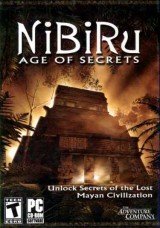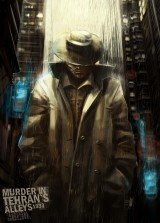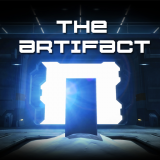Review for Mia and the Dragon Princess

When it comes to player agency, video games cater to all tastes, from pixel-perfect extreme platformers that demand almost superhuman timing and precision to more slow-paced, leisurely games like walking simulators and visual novels. And then there’s publisher Wales Interactive, whose general modus operandi might best be described as “watch movie and click mouse every few minutes”. Mia and the Dragon Princess caters to fans of this approach, mixing a Hong Kong martial arts flick with a cheeky Indiana Jones adventure about a missing treasure and a pirate princess lost in time. At least that’s what the label on the box says, but the execution, though occasionally scoring points for fun ideas, is less exciting than it sounds.
The story ostensibly centers around Marshanda Damayandi, whom we’re introduced to in a stylish animated opening sequence. Marshanda’s an Indonesian princess who fled her royal duties in the 18th century to live the life of an outlaw on the wide-open seas, becoming the fabled Pirate Princess. Over time, she became partners with Red Kat Morgan, a fellow buccaneer, and together the two amassed untold wealth and riches; that is until Marshanda hid away from pursuers in the Arctic, with only a magical wrist-mounted compass to point the way back to Red Kat and the treasure. Fast-forward several hundred years, and we find ourselves in present-day London, where Marshanda (it’s implied she was frozen all these years) is being chased through the streets wearing nothing but a hospital gown, the compass on her wrist guiding her ever onward.
Marshanda, however, isn’t the game’s central protagonist. Enter Mia, a barkeep working at the nearby Smuggler’s Tavern, an underground bar that Marshanda soon finds her way to. It’s Mia whom we will be making choices for, the game’s only means of player interaction. As the movie plays out, the action will pause every few minutes so we can pick from a couple of on-screen choices. Having just discovered Marshanda behind an alley dumpster, Mia must either cover for her or alert a couple of patrolling policemen to her presence. When it comes time to sneak Marshanda into the bar, Mia can either cause a scene to distract the patrons or opt for a stealthier approach. This is the general way things unfold, with choices often sending the story down one of a number of branching pathways until its inevitable conclusion.
It makes sense then that Mia and the Dragon Princess has many possible endings, including some that lead to death. The different paths one can take, and how various choices lead to others, can be tracked on the game’s Story Tree feature, a flowchart that shows all previously taken paths, with the current path highlighted for easy reference. Reaching an ending allows players to start a second or subsequent playthrough to see where else the story could have gone. Unfortunately, the Story Tree does not allow you to go straight to a desired scene or branching point, only serving as a visual to plan out your path. Previously viewed scenes are at least skippable on subsequent playthroughs, though any deviations disable this feature; even on my fourth playthrough, I found myself having to sit through many scenes over and over due to minute changes caused by minor choices made earlier.
Not every player choice automatically branches the narrative. Some decisions instead influence Mia’s personality stats – five traits that fluctuate based on the choices made. These traits are important as some choices down the line – and, by extension, entire narrative branches and endings – are only available if the right combination of decisions have been made up to that point. Those that want to experience everything Mia has to offer will need to go through the game several times to figure out what leads to a desired outcome. Unfortunately, it’s hard to imagine any but the most die-hard Wales Interactive fans will stick around long enough to unlock 100% of the story, as the narrative and execution leave a good bit to be desired.
As I mentioned earlier, Mia and the Dragon Princess takes more than a little inspiration from adventure fare like Indiana Jones: “good guys are on the run from bad guys while following clues left long ago and surviving deadly traps on the way to a fabled treasure”. While Indy himself might seek out a dingy, dusty dive like the Smuggler’s Tavern to meet up with ne’er-do-wells and attain questionable info, it’s hard to imagine such an unpleasant setting playing host to the majority of one of his adventures. But that is exactly what players will be doing here, as more than half of each one-hour playthrough will be set within the unpleasant cellar bar. In fact, even after characters finally make it out of the establishment’s confines, several story paths see them returning there before the credits roll. My first playthrough was just such a suboptimal one, and it wasn’t until my second playthrough (a leap some players may not be willing to take after an underwhelming first run) that I saw a far more fantastical setting for the game’s latter half.
The characters are by and large a mixed bag, though there wasn’t anyone I particularly connected with or even found charming. Other than two or three of the main cast, I’d be hard-pressed to tell you much about any of them, or even remember their names. Some seem to simply be included to be expendable. The actors all do an acceptable job, though the writing isn’t exactly Shakespeare. More importantly, though, I missed the camp and humor that are so important to a cheesy fantasy adventure like this (an opening scuffle in a restaurant is pretty humorous, though this level of silliness quickly falls by the wayside). However, there are a couple of flashy action moments, and the hand-to-hand martial arts scenes are fun, if not groundbreaking; still, credit where credit is due, I suppose.
It’s too bad that it’s all in service of a story that isn’t terribly engaging and – worse yet – only serves as the first part of a larger tale. The best-case ending scenario only throws out a couple of “that’s a story for another time” breadcrumbs. After four playthroughs, nothing was resolved, and the real hunt for the treasure seems only to begin as credits roll. It’s hard to imagine anyone will walk away from this game itching for more, so it’s a story that may never be completely told.
Overall, Mia and the Dragon Princess missed its cue. Yes, it’s a martial arts quest for a long-lost treasure, but most of its elements just fell too flat for me. The story and its primary location don’t provide enough excitement to warrant repeat playthroughs, let alone waiting for a sequel to pay off basic plotlines. There’s the occasional fun action scene and the acting is okay, but repeat playthroughs require watching a lot of this over again, even with the ability to skip previously viewed scenes. More than anything, though, I simply didn’t care enough about Mia, Marshanda, or the missing treasure to wonder how the quest continues, and I think this fact, above all others, is the game’s greatest downfall.


























